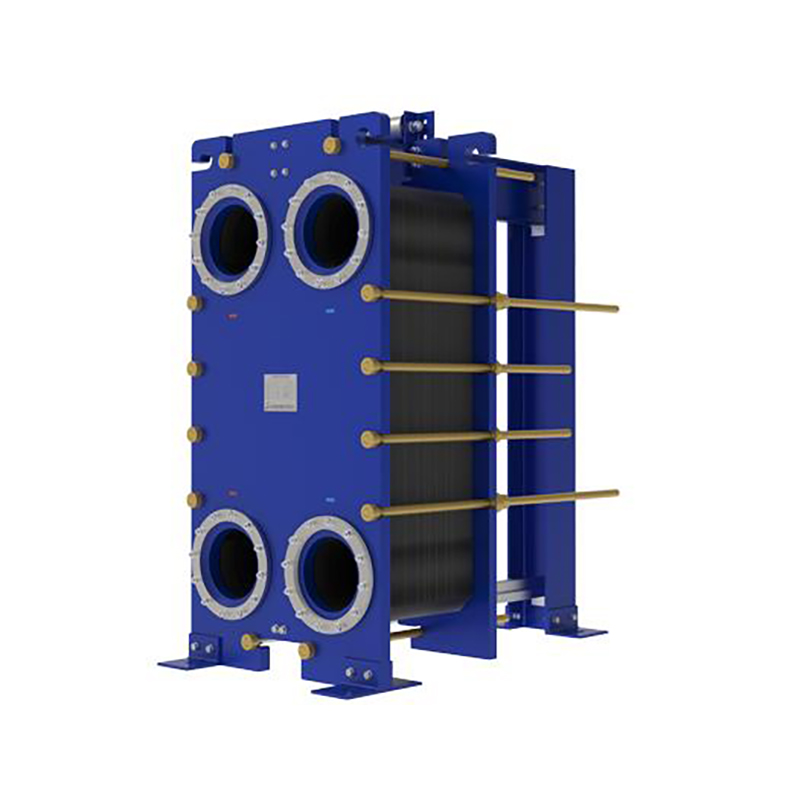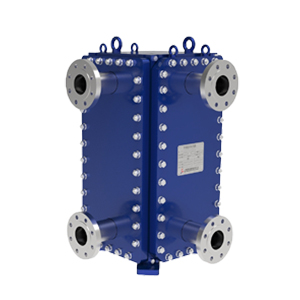5 key roles of plate heat exchanger gaskets.
Plate heat exchanger gaskets perform 5 key roles: ...
More
A CO2 heat exchanger operates on the principle of transferring thermal energy between carbon dioxide in its supercritical or transcritical state and another process fluid, typically water, brine, or a secondary refrigerant. This process is governed by the fundamental laws of thermodynamics, specifically conduction and convection. In supercritical systems, CO2 is pressurized beyond its critical point (73.8 bar, 31.1°C), where it exhibits unique properties of high density like a liquid and low viscosity like a gas, enabling exceptionally efficient heat transfer. The design often incorporates microchannel or tube-in-tube configurations to maximize the surface area for heat transfer, capitalizing on CO2's favorable thermophysical properties. This allows for a highly compact form factor compared to traditional exchangers, as the high pressure and excellent heat transfer coefficients of CO2 mean less material and space is required to achieve the same, or greater, cooling capacity. The principle is applied in both gas coolers, where supercritical CO2 rejects heat to the surroundings, and evaporators, where it absorbs heat.
The operational principle translates into tangible performance benefits, primarily driven by the exceptional heat transfer coefficients of carbon dioxide. Data from industrial case studies and manufacturer technical sheets, such as those from Alfa Laval and Kelvion, consistently show that CO2 heat exchangers can achieve heat transfer coefficients significantly higher than those using conventional refrigerants like ammonia (R717) or hydrofluorocarbons (HFCs). For instance, in a gas cooler application, CO2 can achieve coefficients ranging from 1500 to 4500 W/m²K, depending on pressure and flow conditions, vastly outperforming traditional counterparts. This high efficiency directly reduces the required heat transfer surface area by an estimated 30-50% for an equivalent duty, leading to more compact and lightweight system designs. This compactness is a critical advantage in space-constrained installations like modern supermarkets or food processing plants. Furthermore, the efficiency of the heat exchange process minimizes the approach temperature (the difference between the outlet temperature of the hot fluid and the inlet temperature of the cold fluid), often to within just 2-3°C. This tight approach optimizes the entire refrigeration cycle's coefficient of performance (COP), leading to lower compressor energy consumption and operational costs. The principle of leveraging CO2's supercritical state is thus the foundation for building a highly efficient and powerful thermal management system.
The decision to implement a CO2 (R744) heat exchanger is driven by a powerful combination of regulatory compliance, superior thermodynamic performance, and growing environmental responsibility. The primary catalyst is the global phasedown of high-global warming potential (GWP) synthetic refrigerants mandated by the Kigali Amendment to the Montreal Protocol and regional regulations like the EU F-Gas Regulation. CO2, with a GWP of 1, presents a future-proof, natural alternative. Beyond compliance, the core reason for its use is its unparalleled efficiency in specific applications, particularly in commercial refrigeration, heat pumps, and industrial processes. Its excellent thermophysical properties enable system designs that achieve higher Coefficients of Performance (COP), especially in colder climates or for high-temperature heating applications like district heating networks. The inherent safety of CO2, classified as an A1 (lower toxicity, no flame propagation) refrigerant, also reduces operational risks compared to ammonia (B2L) or flammable hydrocarbons, simplifying system design and lowering insurance costs. Ultimately, using a CO2 heat exchanger is a strategic investment in operational efficiency, regulatory longevity, and corporate sustainability.
Adopting CO2 heat exchanger technology delivers substantial and measurable benefits across financial, operational, and environmental metrics. Financially, while the initial investment in high-pressure components can be 10-20% higher than traditional systems, the return on investment is compelling. The exceptional heat transfer efficiency leads to dramatically lower energy consumption; real-world data from supermarket installations across Europe and North America show annual energy savings of 10-25% compared to HFC-based systems. In heat pump mode for water heating, CO2 systems can achieve COP values exceeding 4.0 even when producing hot water at 90°C, a task where standard heat pumps struggle. Operationally, the compact size of the heat exchangers allows for modular, prefabricated system designs that reduce installation time and costs. From an environmental perspective, the impact is profound. Beyond having a negligible direct GWP, the indirect emissions from reduced energy consumption are significantly lower. Life Cycle Climate Performance (LCCP) analyses, which consider both direct and indirect emissions, consistently rank CO2 systems among the lowest-emitting options available today. This makes them a cornerstone technology for companies aiming to meet stringent carbon neutrality targets and appeal to an increasingly eco-conscious market.
Select the most popular foreign trade service products to meet your diverse needs
Learn more about the dynamics and professional knowledge of the foreign trade industry

Plate heat exchanger gaskets perform 5 key roles: ...
More
A gasket in heat exchanger seals surfaces, blocks ...
MoreAPI 662 defines standards for plate heat exchanger...
More
You can see clear differences between welded block...
More
Gasketed plate heat exchangers boost industrial ef...
More
Plate heat exchangers boost industrial energy effi...
MoreSelect the most popular foreign trade service products to meet your diverse needs
Explore more content related to foreign trade services

User Comments
Service Experience Sharing from Real Customers
Michael Chen
HVAC Design EngineerThis CO2 heat exchanger has been a game-changer for our latest sustainable HVAC project. The efficiency in heat transfer is exceptional, and the build quality is robust. It integrated seamlessly into our transcritical CO2 system, exceeding our performance expectations.
Sarah Johnson
Research ScientistWe purchased this unit for our lab's carbon capture research. The precision and reliability of this heat exchanger are outstanding. It maintains stable performance under varying pressures, which is critical for our experiments. Highly recommended for research applications.
David Williams
Maintenance ManagerExtremely durable and low maintenance. We've been using it in our industrial refrigeration plant for 6 months with zero issues. It handles the high pressures of CO2 perfectly. The only reason it's not a 5 is that the initial installation required some custom fittings.
Lisa Rodriguez
Project ManagerOutstanding product that delivered significant energy savings for our client's heat pump system. The compact design was a major plus, allowing for an easier installation in a tight mechanical room. The manufacturer's technical support was also top-notch.